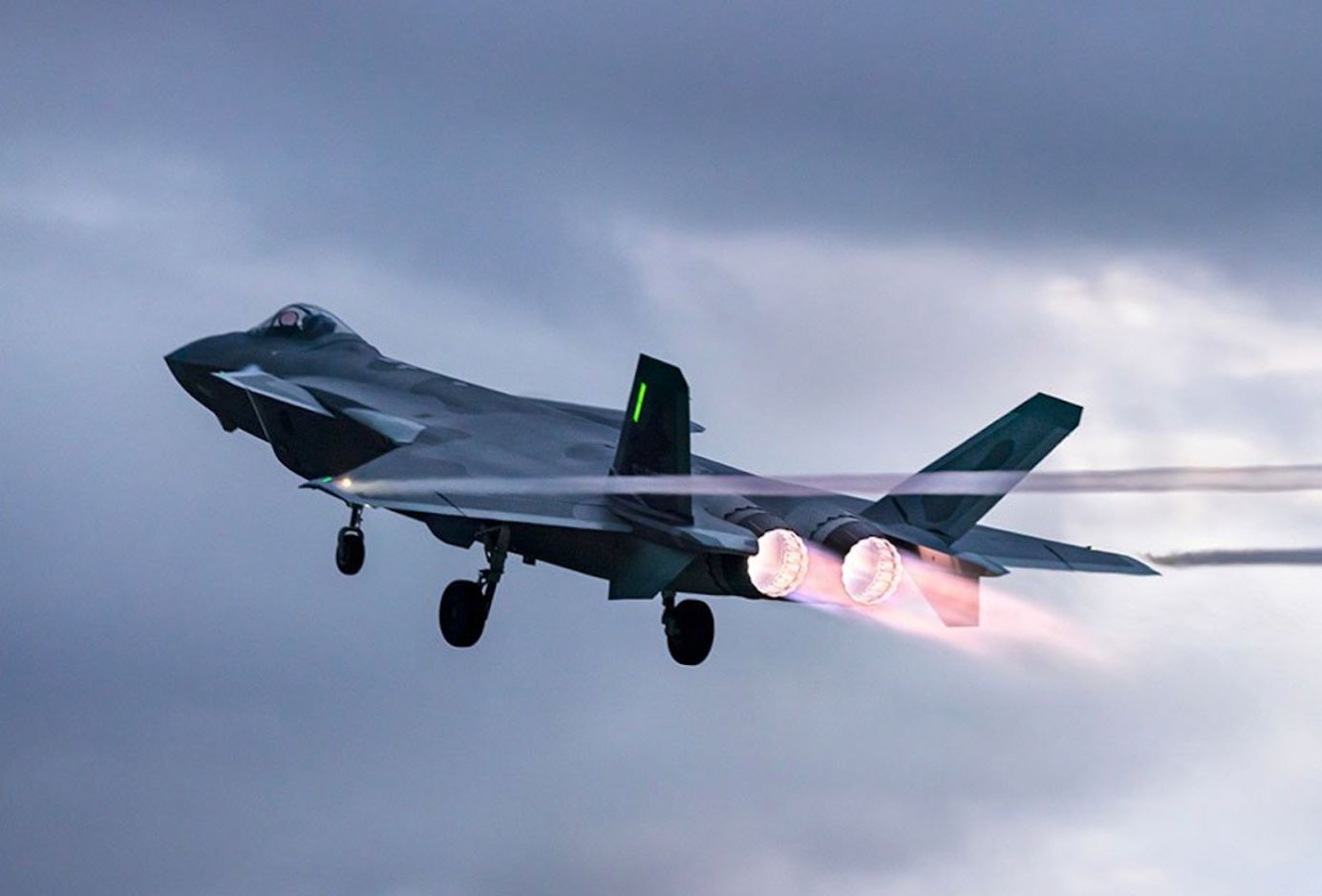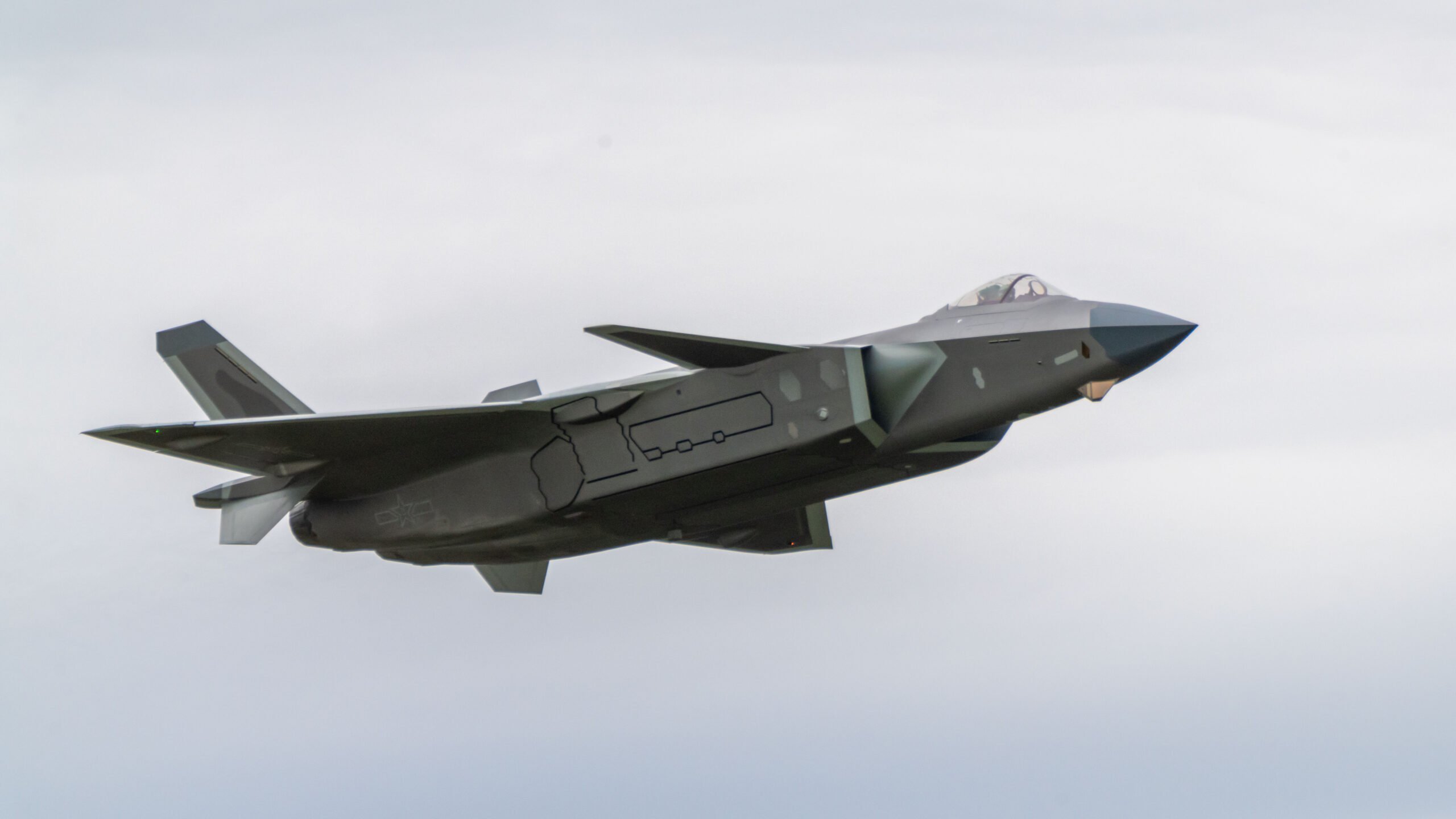China has claimed groundbreaking innovation poised to revolutionize aviation technology: a shark skin-inspired structure embedded within a turbofan engine.
According to Chinese claims, this development promises to significantly reduce drag and enhance engine efficiency, potentially propelling China to the forefront of next-generation engine development.
The newly-introduced “shark skin” structure, meticulously crafted from a high-strength, large titanium alloy through precision 3D printing, has been hailed by Chinese researchers as a game-changer in aerodynamics.
According to the South China Morning Post (SCMP), this cutting-edge technology has the potential to slash drag by up to 10%, marking a substantial leap forward in engine performance.
The focal point of this groundbreaking endeavor lies in an engine component known as the intermediate casing. This crucial element, exceeding a meter in diameter, features meticulously designed bionic grooves, each measuring a mere 15 to 35 micrometers in depth — finer than a human hair.
Traditionally, manufacturing such a large hard alloy component with such precision on a 3D printer was unattainable. Researchers, however, have successfully overcome this formidable challenge through advanced 3D printing techniques and commercial software.
The intermediate casing, a critical load-bearing structural element within aviation engines, plays a pivotal role by connecting various engine components and transmitting thrust to the aircraft fuselage.
Despite its slender profile — measuring just 3mm at its thinnest point — the casing boasts remarkable strength, capable of withstanding loads exceeding 10 tonnes.
Laboratory tests have confirmed that the Chinese team’s prototype meets stringent mechanical requirements and achieves a 25% reduction in weight compared to traditional castings without compromising structural integrity.
This breakthrough holds immense promise for the aviation industry, heralding a new era of lighter, more efficient engine designs.
The report added that researchers envision a future where hollow fan blades, liberated from conventional structural constraints, can incorporate advanced internal skeletons and lattice structures, substantially enhancing impact resistance.

Innovation Poised To Push China Closer To US?
The Chinese report believes this innovative leap could position Beijing to catch up with—and potentially surpass—the United States and its allies in modern engine development, a field in which China has historically lagged.
For years, Chinese military aircraft relied heavily on jet engines imported from Russia, which often suffered from reliability issues and subpar performance.
This dependency prompted China to ramp up its investment in indigenous engine development. The 2016 inclusion of jet engine performance improvement in China’s 13th Five-Year Plan marked a turning point, emphasizing the strategic importance of advancing the aerospace industry.
Since then, China’s efforts have borne fruit. The country has started equipping its premier J-20 stealth fighter jets with domestically produced Xi’an-built Woshan-15 (涡扇-15 or WS-15) “Emei” engines.
This progress has not gone unnoticed internationally. John R. Sneden, propulsion director for the US Air Force’s Life Cycle Management Centre, acknowledged China’s significant investments in propulsion technologies and warned that the US was losing its propulsion lead to China.

Although Beijing’s technological prowess in engine development may not rival the United States, Chinese media claim that this latest shark skin tech could propel China to a competitive position. The next generation of engines requires reduced fuel consumption for increased thrust, which presents numerous challenges.
China’s advancements come when the US has been reevaluating its approach to next-generation fighter engines. The US Air Force recently announced plans to abandon the Adaptive Engine Transition Program (AETP) in favor of upgrading existing engines, highlighting the challenges faced in developing new propulsion systems.
Speaking to EurAsian Times, Patricia Marins, a Brazil-based defense expert, pointed out, “There is just a point on this. Military jets work more with turbojet engines, not turbofans, which are more used in commercial aviation.”
However, Marins acknowledges the transformative potential of this technology shift, particularly highlighting its revolutionary implications for cruise missiles and unmanned aerial vehicles (drones).
Nonetheless, China’s shark skin technology represents a crucial advancement. While the development is not directly related, similar innovations are being explored globally.
For instance, in early 2022, Lufthansa Group’s Boeing 747 400 featured AeroSHARK, a film-like coating with ribbed textures designed to reduce friction and improve fuel efficiency. This application of biomimicry aims to cut fuel consumption and lower carbon emissions, reflecting the airline industry’s commitment to environmental sustainability.
Therefore, China’s latest breakthrough could significantly impact the future of aviation, offering a pathway to more efficient and environmentally friendly engine designs. With continued investment and innovation, Beijing is well-positioned to challenge the dominance of traditional aerospace leaders like the USA.
- Contact the author at ashishmichel(at)gmail.com
- Follow EurAsian Times on Google News




